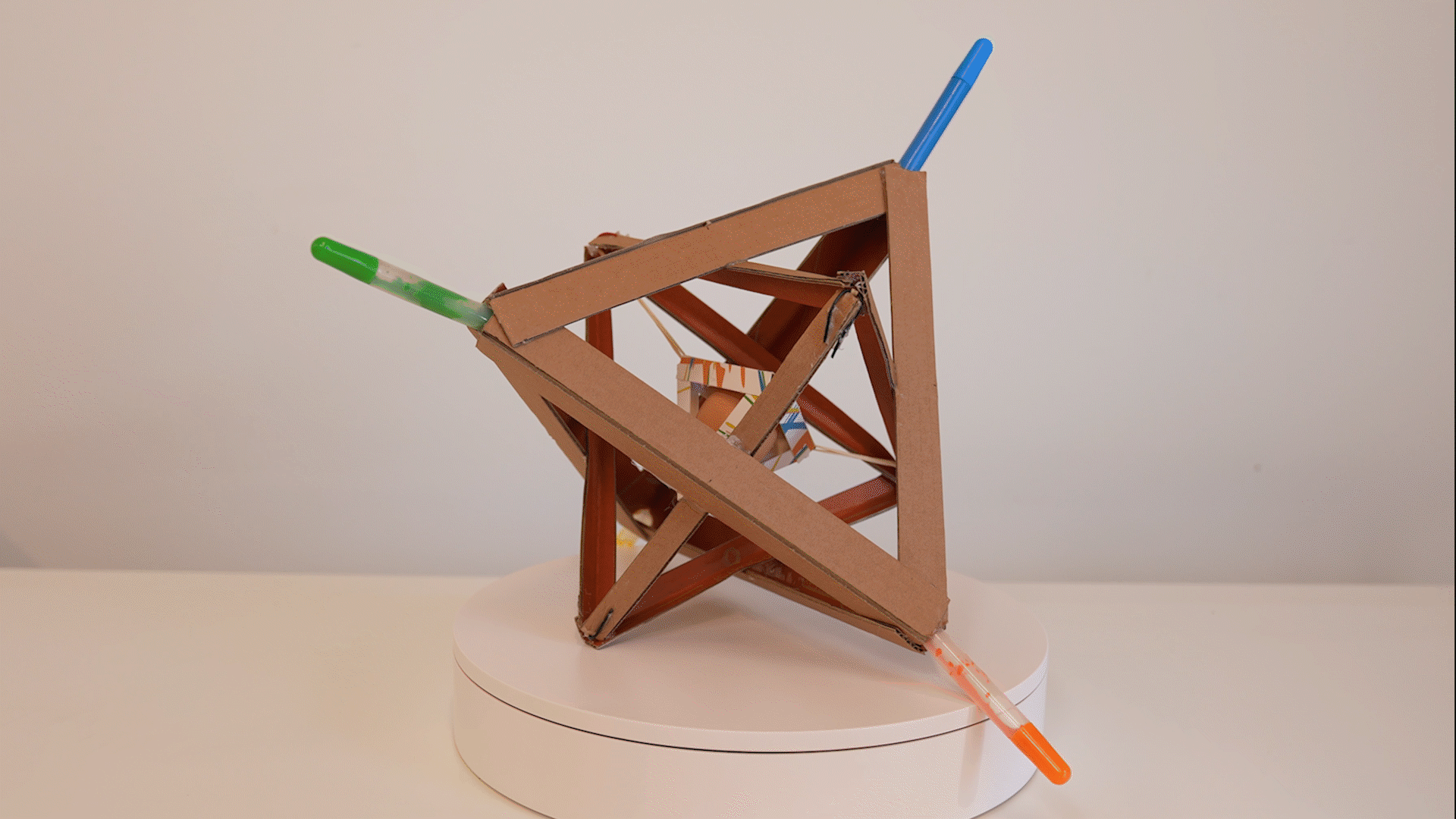Idea development might sound like startup jargon, but this process is probably more familiar than you think.
When you were a kid, did you ever do the egg drop experiment in your science class? Your teacher presented you with a problem: you were going to be dropping eggs from a window or rooftop—and you needed to keep the eggs from cracking. Your class got split up into teams, and you had to come up with an innovative design to protect the egg as it plummeted toward the concrete below. A scramble ensued as your peers launched for the cardboard, the glue, the popsicle sticks, the bubble wrap…
But, the team that always won the experiment was the one who took the time to brainstorm, assess each proposed solution, and run tests. They followed the best practices of idea management.
You might have swapped out your backpack for a briefcase, and your pencil case for a sweet tech stack, but the lessons of your youth remain relevant. Let’s dive into the stages of idea development, and how to take a business idea from concept to market.
The 6 Stages of Idea Development
Each stage of the idea development process is uniquely important. Brainstorming and idea generation aren’t the only fun parts! Concept development and turning a great idea into a tactical business plan are just as satisfying. And when you see your great idea take off? Priceless.
Understanding the stages of idea development makes you better equipped to oversee the idea management process and support your team in bringing winning new business ideas to life.
1. Problem Identification
The foundation of any successful new product is a well-identified problem.

This is equally true for keeping successful products afloat and continuously delivering value to your dedicated customer base. Understanding the pain points or unmet needs of existing and potential customers sets the stage for impactful solutions, and narrows your team’s focus when it comes time to brainstorm. And, it’s what customers expect:
65% of customers expect companies to adapt to their changing needs and preferences, yet 61% say most companies treat them as a number.
Salesforce’s 2023 State of the Connected Customer Report
So start by engaging your team in problem-identification exercises. You can conduct user or market research, develop personas or ideal customer profiles (ICPs), or run competitive analysis. Aligning everyone around a concrete problem ensures that the ideation process that follows is targeted and effective. Plus, getting everyone involved in the early stages turns your team members into stakeholders—it gives them a sense of ownership in the process and drives their motivation and engagement.
Make it a Job To Be Done
You might structure your problem as a Job To Be Done (JTBD). This design framework presents your target user’s problem as a job they are ‘hiring’ your business to solve for them. If your customer base were to create a job posting that your product or service would be an ideal candidate for, what would it look like?
2. Idea Generation
With a mission established, it’s time to put your thinking cap on!

The idea generation stage is where creativity meets strategy. Techniques like brainstorming sessions and mind mapping are great ways to spark ideas for problem-solving, whether you’re a solo entrepreneur, a scrappy startup team, or a multi-expertise product department. And idea management software can help facilitate the entire process from start to finish.
For teams engaging in collaborative idea generation, it’s essential to create a sense of safety and inclusion. The more people feel empowered to speak up and share their most out-of-the-box ideas, the more you can push the boundaries of what’s possible. Opening up a brainstorming session with an icebreaker or creative thinking exercise is a great way to do this.
Try the SCAMPER Method
The SCAMPER method is a useful framework for generating ideas for an existing product or prototype. Here’s how it breaks down:
- Substitute: Consider what can be replaced or reimagined.
- Combine: Explore how you might integrate two or more elements to create something new.
- Adapt: Find an element that works well elsewhere and adapt it to a new context.
- Modify: Change part of the product to generate a new outcome.
- Put to another use: Imagine new ways to use the existing product.
- Eliminate: Consider what would happen if something was removed or simplified.
- Reverse: Reverse the order of operations or consider a different flow.
3. Idea Evaluation
Coming up with a bunch of great ideas is invigorating—but you’re not ready to launch into production just yet.

As tempting as it might be to take the flashiest idea and run with it, it’s essential to be strategic and really weigh your ideas to identify the ones with the most potential. This helps you turn your best ideas into concrete plans that will further your business strategy and drive growth.
Consider factors like feasibility, scalability, and alignment with business objectives as you filter ideas. You can implement a product prioritization software or other tech to support your evaluation and make for a more objective process. And just like with the first two stages, evaluating ideas in a collaborative way can help foster team engagement and commitment.
Try the MoSCoW Method
This prioritization framework is a great way to choose which ideas to work on. You might decide to score ideas based on factors like impact and effort, to begin with, and then you can score them with the MoSCoW method:
- Must: Ideas that have the highest potential and should be tackled first.
- Should: Ideas that are also strong, but can be implemented later.
- Could: Ideas that have potential impact but high effort, or that could be worth testing.
- Won’t: Ideas that aren’t worth pursuing or who’s potential is hard to prove.
4. Idea Implementation
You’ve articulated the problem. You’ve come up with potential solutions. You’ve narrowed down your focus. Now, it’s time to bring the vision to life!

This stage should focus on rapid prototyping to create a visual representation or minimum viable product (MVP). The goal is to have something tangible to test and validate your idea in the real world, without exhausting too many resources creating it. Narrow down the essential features that are must-haves and weed out whatever is extra, then set to work crafting your test model.
You can opt to use a prototyping platform, a product design software, or a mockup tool to outline your product or feature idea. Some of these platforms have tools for collecting feedback built in, helping to facilitate the next step (idea validation), too. However you craft your prototype, be sure you can have real customers or users take it for a test drive.
5. Idea Validation
Once you have your prototype ready, it’s time to open up the feedback floodgates.

But before you send your product out into the wild, be sure to have clearly established metrics for success. Who is your target audience or user base? What does a positive user reception look like? These are questions you need to realign on so that you’re better able to analyze your test results.
As for testing itself, you might set up feedback templates, surveys, focus groups, or other structures through which users can share their experience of your product. Digital products can run A/B tests for clear comparative data, or employ design feedback tools or usability testing tools for more standardized and structured testing.
Embrace the Unexpected
As important as it is to keep your testing focused, don’t ignore surprising and unexpected results. Sometimes, the most innovative ideas come from testing a hypothesis and uncovering a totally different outcome. And other times, even the most promising ideas ultimately result in failure. But remember that all is not lost.
What’s most important is that you harness the learnings that come from your testing and channel them into improvements, adjustments, or even brand-new ideas. This is the value of being agile and iterative—embrace it!
6. Idea Refinement
Now this is where the magic truly happens.
The idea refinement stage is when you take all of that juicy input you got through your idea validation efforts, and channel it into improving upon your prototype. This could mean making minor tweaks or heading back to the drawing board—you could focus on quick iteration or long-term vision planning. It will all depend on your business model and goals.
Keep in mind that while this stage technically is the last, it will often send you right back to the start of the idea development process. Your cycles may become quicker and the scope of your ideas may become leaner, but the best products and businesses are the ones that continue to iterate and deliver new value. That’s how you maintain the well-being of your products and services!
Turning Idea Development Into a Habit
Great products aren’t built overnight. And the best ones don’t stop at ‘good enough’. Product development should be an ongoing effort, and your product team should ideally be cycling through the stages of idea development regularly to continuously deliver value to your customer base and tap into new markets.
You can start small. Run a workshop around a single problem that users run into with your product, and go from there. The more your team learns to flex these muscles, the more habitual the process will become. Take the frameworks, strategies, tactics, and tips from this article and set to work. Before you know it, you’ll have an initial product that’s ready for improvement!
Join For More Product Management Insights
Don't forget to subscribe to our newsletter for more product management resources and guides, plus the latest podcasts, interviews, and other insights from industry leaders and experts.


